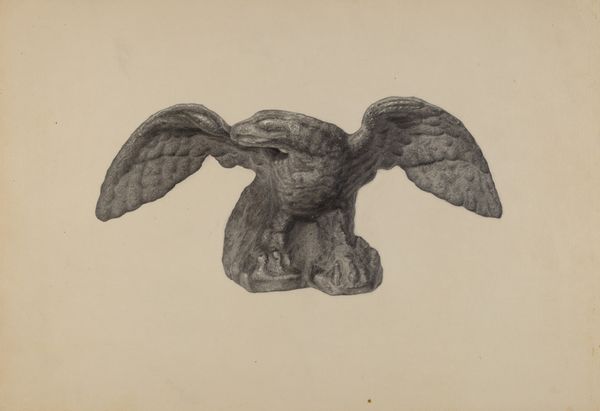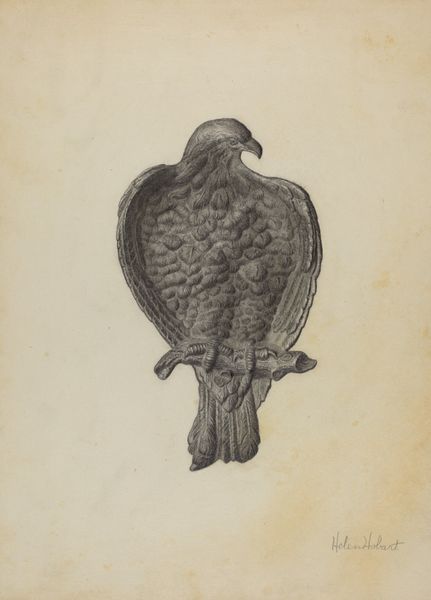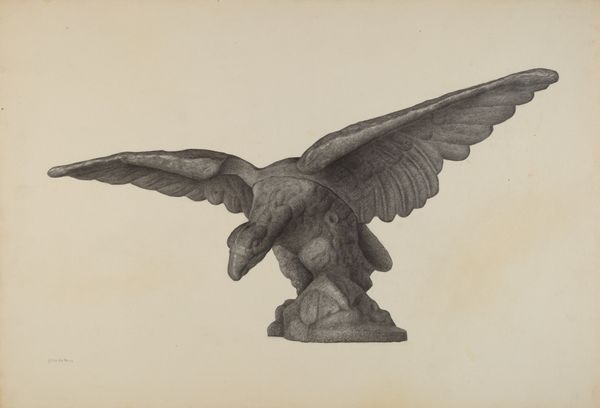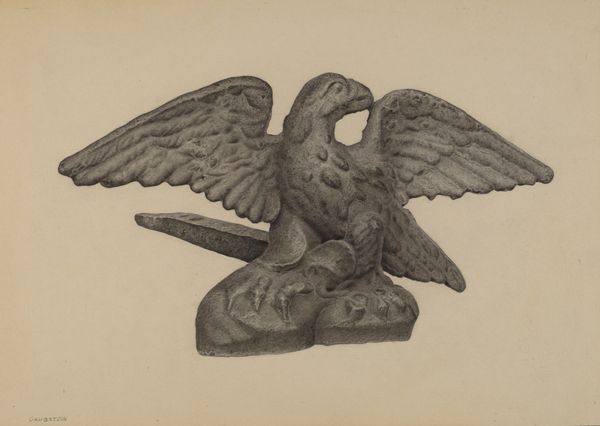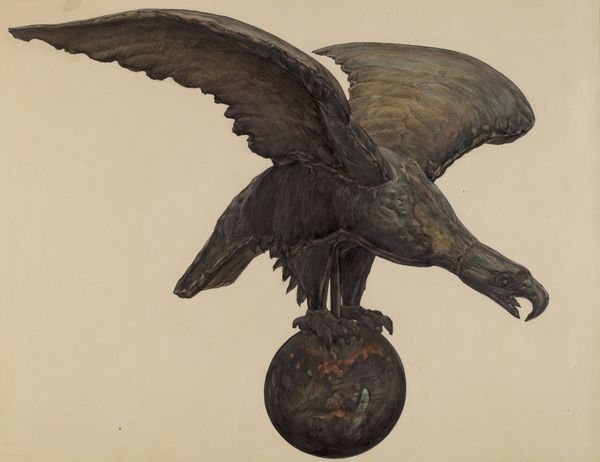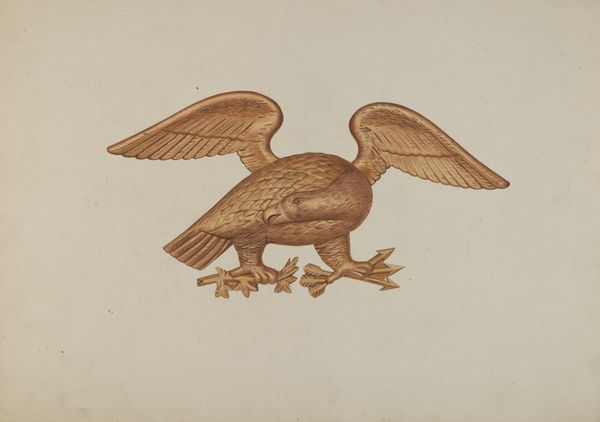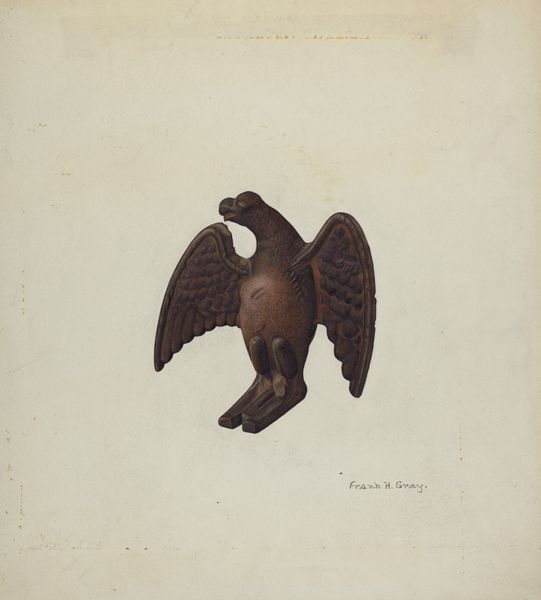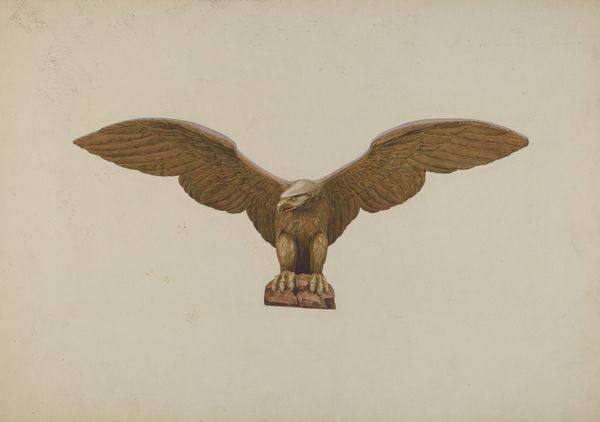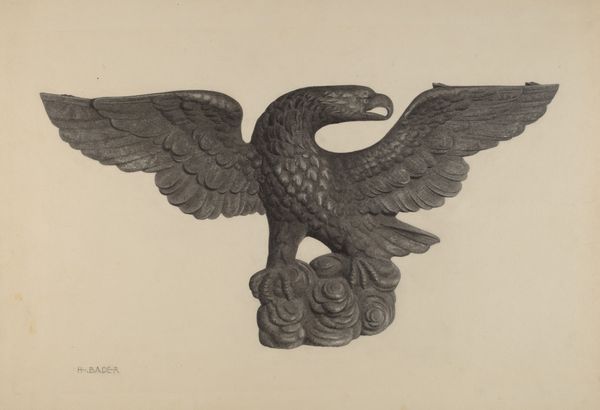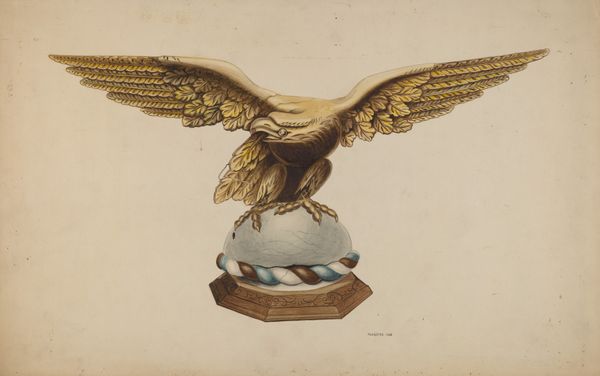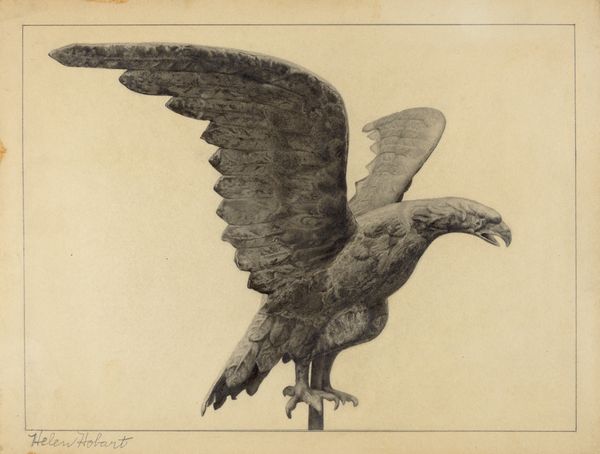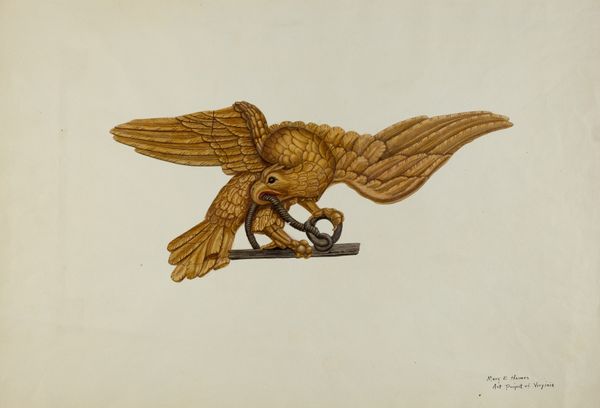
drawing, pencil
#
pencil drawn
#
drawing
#
amateur sketch
#
toned paper
#
light pencil work
#
shading to add clarity
#
pencil sketch
#
landscape
#
figuration
#
personal sketchbook
#
pencil drawing
#
pencil
#
sketchbook drawing
#
pencil work
#
realism
Dimensions: overall: 29 x 22.8 cm (11 7/16 x 9 in.)
Copyright: National Gallery of Art: CC0 1.0
Editor: This drawing, "Eagle" by Filippo Porreca, dates from around 1935 to 1942 and appears to be made with pencil on paper. It has a somewhat preparatory feel, like a sketch from a personal sketchbook. How might we understand this piece within the context of Porreca’s broader artistic output? Curator: Looking at the medium first, pencil, and the support, paper, these are incredibly accessible and democratic materials. This contrasts sharply with the grand, often monumental, imagery typically associated with eagles. Who had access to create, who had the means to disseminate such images during this period? The social context is key. Editor: That’s interesting! It feels so personal and immediate. But if the materials are relatively simple, where does the artistic value lie? Curator: Precisely. It challenges the notion of inherent value tied to precious materials like marble or bronze. The value is relocated to the skill and labor evident in the rendering, the process of creation itself. What does the choice to depict an eagle – a potent symbol of power – in such a modest way suggest about the artist's own relationship to power structures? Editor: I see what you mean! By using commonplace materials, Porreca seems to be questioning the conventional reverence associated with this type of symbolism. Curator: Exactly. Consider the implications for the viewer as well. This isn't an imposing sculpture commanding respect. Instead, it invites quiet contemplation. Who was this art made for, and where was it made? Could its production also be a political act? Editor: Wow, I hadn’t thought about it that way. It makes me appreciate the drawing’s humble approach and quiet subversiveness so much more. Thanks for pointing out those material and social contexts. Curator: And I, your observations about the intimate, personal quality of the sketch encourage considering how such works shape an artist's identity and place within the broader historical narrative.
Comments
No comments
Be the first to comment and join the conversation on the ultimate creative platform.
